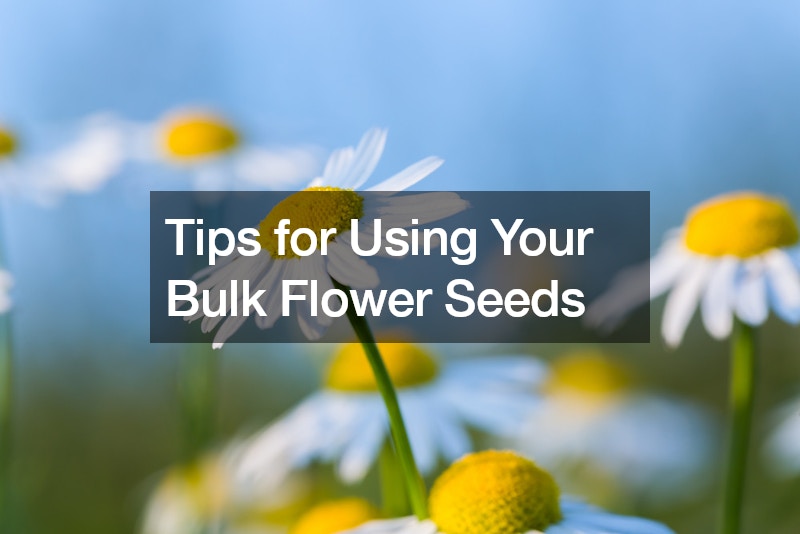Gardening enthusiasts often find joy and satisfaction in nurturing beautiful blooms from seeds. Bulk flower seeds offer an economical and rewarding way to cultivate vibrant gardens bursting with color and life. However, effectively utilizing bulk flower seeds requires careful planning and attention to detail. Whether you’re a seasoned gardener or just starting out, these tips will help you make the most of your bulk flower seeds.
1. Plan Your Garden Layout
Before diving into planting, take some time to plan your garden layout. Consider factors such as sunlight exposure, soil type, and the mature size of the flowers. Sketch out a rough design of where you want each type of flower to go, keeping in mind their height, color, and blooming season. This will help you visualize how your garden will look and ensure that each plant has enough space to thrive.
2. Choose the Right Seeds
When purchasing bulk flower seeds, be sure to select varieties that are well-suited to your climate and growing conditions. Read the seed packets carefully to determine the optimal planting time, spacing requirements, and any special care instructions. Look for reputable seed suppliers that offer high-quality seeds with a good germination rate. Investing in quality seeds will increase your chances of success and ensure that your garden flourishes. If you want a high-quality garden, you have to start with the proper foundation!
3. Prepare the Soil
Preparing the soil is essential for healthy plant growth. Before planting your bulk flower seeds, loosen the soil to improve aeration and drainage. Remove any weeds or debris and amend the soil with organic matter such as compost or aged manure to enrich its nutrient content. A well-prepared soil bed will provide a fertile environment for your seeds to germinate and establish strong root systems.
4. Planting Techniques
Proper planting techniques are crucial for successful seed germination. Follow the instructions on the seed packets regarding planting depth and spacing. As a general rule of thumb, plant seeds at a depth that is approximately three times their diameter. Use a small hand trowel or garden hoe to create furrows or holes for planting, then gently cover the seeds with soil and water thoroughly.
5. Watering and Maintenance
Consistent watering is essential for seed germination and plant growth. Keep the soil evenly moist but not waterlogged, as excess moisture can lead to rot and fungal diseases. Water the garden in the morning to allow the plants to dry off during the day, reducing the risk of fungal infections. As the seedlings emerge, thin them out to ensure proper spacing and adequate airflow.
6. Mulching
Applying a layer of mulch around your newly planted seeds can help conserve moisture, suppress weeds, and regulate soil temperature. Use organic mulches such as straw, shredded leaves, or bark chips, and apply them in a layer that is 1-2 inches thick. Avoid covering the seeds themselves with mulch, as this can inhibit germination. Mulching will also improve the overall appearance of your garden and reduce the need for frequent watering and weeding.
7. Pest and Disease Management
Keep an eye out for common garden pests such as aphids, caterpillars, and slugs, which can damage young seedlings. Inspect your plants regularly and take appropriate measures to control pest populations, such as handpicking, using insecticidal soap, or introducing beneficial insects. Additionally, practice good garden hygiene by removing any diseased or damaged plants promptly to prevent the spread of diseases.

8. Deadheading and Pruning
To encourage continuous blooming and maintain plant vigor, deadhead spent flowers regularly throughout the growing season. Use sharp scissors or pruning shears to snip off faded blooms just above a set of healthy leaves or buds. Deadheading not only keeps your garden looking tidy but also redirects the plant’s energy into producing new flowers rather than setting seeds. Similarly, pruning back overgrown or leggy growth can promote bushier, more compact plants and improve air circulation within the garden.
Using bulk flower seeds can be a cost-effective and enjoyable way to create a stunning garden filled with a variety of blooms. By carefully planning your garden layout, choosing the right seeds, preparing the soil, and implementing proper planting and maintenance techniques, you can maximize the potential of your bulk flower seeds and enjoy a bountiful harvest of beautiful flowers throughout the growing season. With a little patience, dedication, and attention to detail, your garden will flourish and bring joy to both you and those who admire its beauty. For more information, be sure to check out the video linked above and do your own research!
